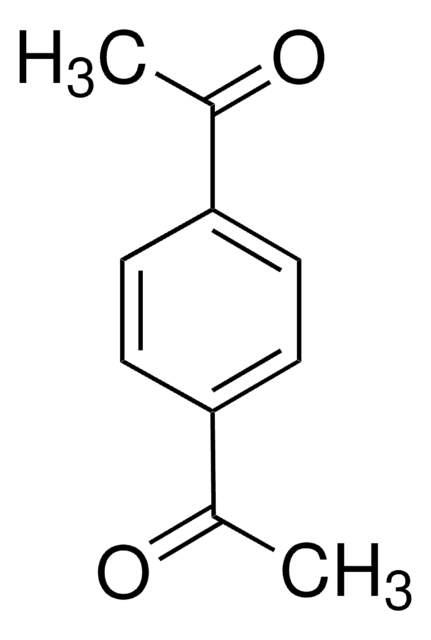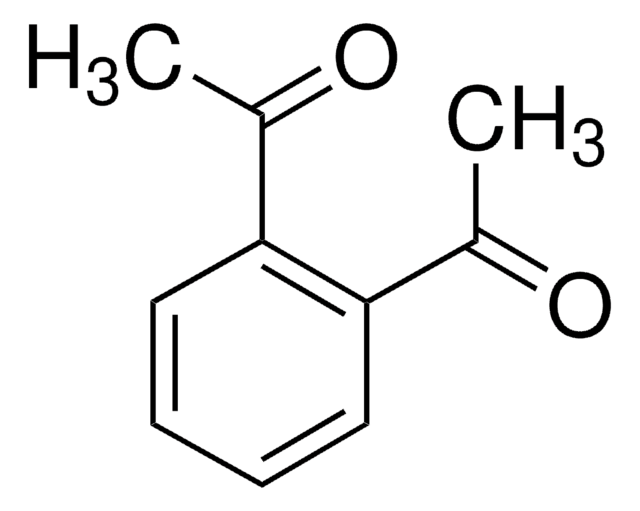158984
1,3-ジアセチルベンゼン
97%
別名:
1,1′-(1,3-Phenylene)bis[ethanone], 1,3-Bis(1-oxoethyl)benzene, 1-(3-Acetylphenyl)ethanone, 2,6-Diacetylbenzene, 3-Acetylacetophenone, m-Acetylacetophenone, m-Diacetylbenzene
About This Item
おすすめの製品
アッセイ
97%
形状
crystals
bp
150-155 °C/15 mmHg (lit.)
mp
28-32 °C (lit.)
保管温度
2-8°C
SMILES記法
CC(=O)c1cccc(c1)C(C)=O
InChI
1S/C10H10O2/c1-7(11)9-4-3-5-10(6-9)8(2)12/h3-6H,1-2H3
InChI Key
VCHOFVSNWYPAEF-UHFFFAOYSA-N
類似した製品をお探しですか? 訪問 製品比較ガイド
詳細
アプリケーション
保管分類コード
11 - Combustible Solids
WGK
WGK 3
引火点(°F)
235.4 °F - closed cup
引火点(℃)
113 °C - closed cup
個人用保護具 (PPE)
Eyeshields, Gloves, type N95 (US)
適用法令
試験研究用途を考慮した関連法令を主に挙げております。化学物質以外については、一部の情報のみ提供しています。 製品を安全かつ合法的に使用することは、使用者の義務です。最新情報により修正される場合があります。WEBの反映には時間を要することがあるため、適宜SDSをご参照ください。
Jan Code
158984-VAR:
158984-1G:
158984-BULK:
158984-10G:
試験成績書(COA)
製品のロット番号・バッチ番号を入力して、試験成績書(COA) を検索できます。ロット番号・バッチ番号は、製品ラベルに「Lot」または「Batch」に続いて記載されています。
この製品を見ている人はこちらもチェック
ライフサイエンス、有機合成、材料科学、クロマトグラフィー、分析など、あらゆる分野の研究に経験のあるメンバーがおります。.
製品に関するお問い合わせはこちら(テクニカルサービス)









